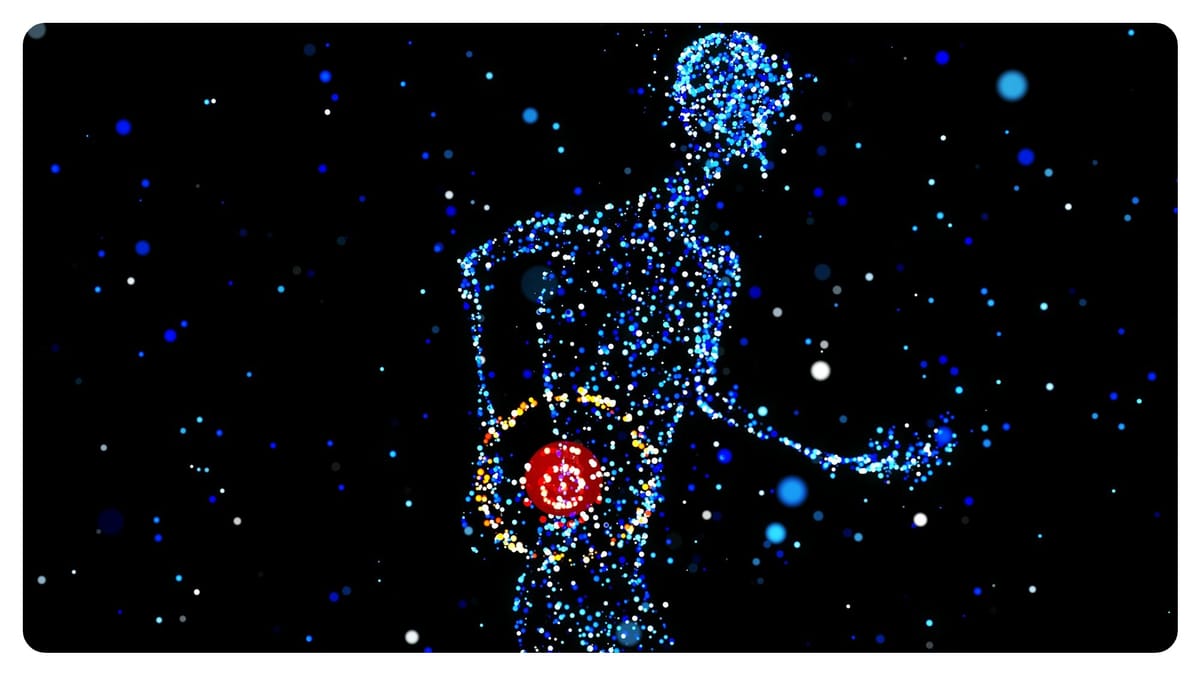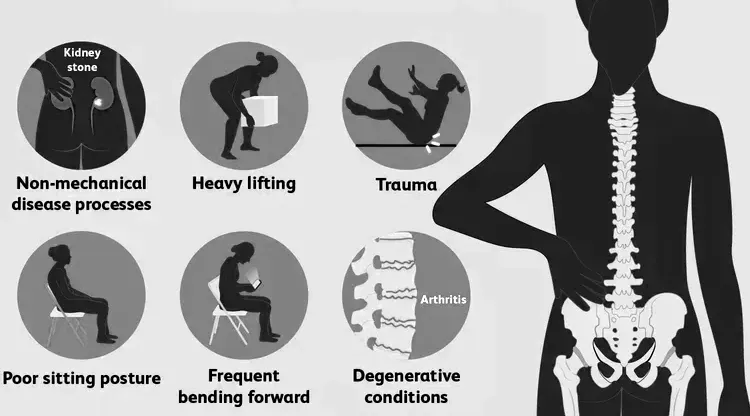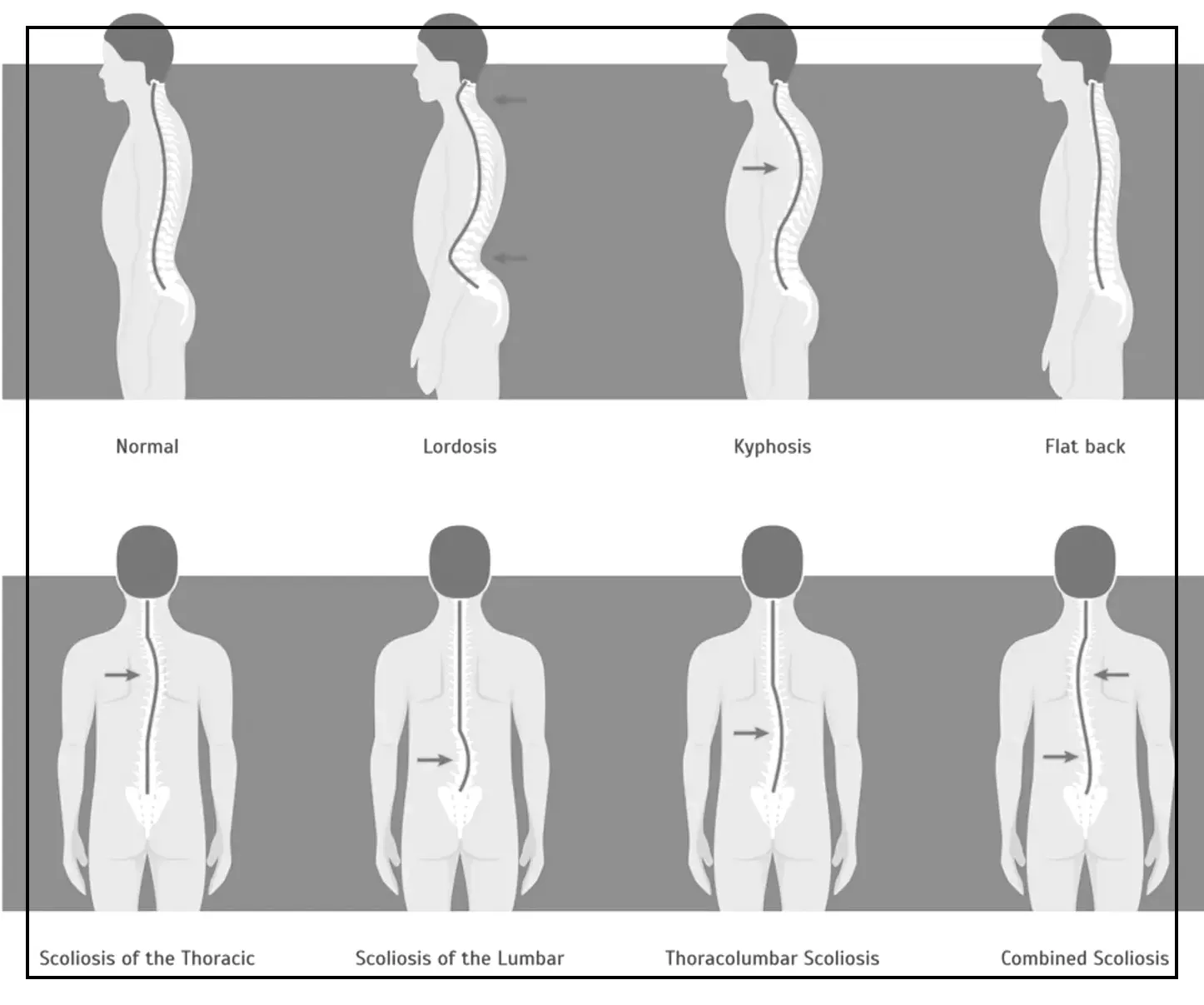Unlocking Relief: Your Comprehensive Guide to Lower Back Pain Relief
Learn effective ways to relieve lower back pain, from gentle stretching and strengthening exercises to ergonomic improvements in your workspace. Find relief and regain mobility for a healthier, pain-free life.

Lower back pain is a common ailment that can disrupt daily activities and diminish quality of life. Whether it stems from poor posture, an injury, or a chronic condition, finding effective ways to manage this pain is crucial.
This article delves into various strategies and treatments that can help alleviate lower back discomfort, offering insights and practical advice to those affected.
Key Takeaways:
- Understand the common causes and symptoms of lower back pain.
- Explore a variety of treatment options, from home remedies to professional therapies.
- Learn preventive measures to maintain a healthy back and avoid future pain.
What Causes Lower Back Pain?
Lower back pain often arises from a blend of physical strain, degenerative diseases, and poor posture. Activities that put excessive stress on the spine, like heavy lifting or sudden awkward movements, are frequent culprits. Additionally, conditions such as osteoarthritis and herniated discs can contribute to chronic back discomfort.

Understanding the root cause of your pain is the first step in addressing it effectively. A healthcare professional can help diagnose the specific factors contributing to your discomfort, guiding you toward appropriate treatment options.
Causes
Lower back pain can stem from various reasons, including:
- Muscle and Ligament Issues: Overuse can lead to strains or sprains in the ligaments, muscles, or tendons of the lower back, causing pain.
- Degenerative Disc Disease: Over time, the discs between your vertebrae can wear down, becoming thinner and less able to cushion the spine, leading to pain.
- Herniated Disc: The protective covering of discs can tear, causing the inner tissue to push through and press on nerve roots, resulting in pain, tingling, or weakness.
- Sciatica: Pain due to irritation or pinching of the sciatic nerve, often causing discomfort down the leg from the lower back.
- Spondylolisthesis: When a vertebra slips forward, it can disrupt spinal alignment and compress nerve roots, causing pain and discomfort.
- Spinal Stenosis: Narrowing of the spine's inner spaces, often from herniated discs or bone spurs, which can put pressure on spinal nerves.
- Spinal Deformities: Abnormal curves or shapes of the spine, such as scoliosis, lordosis, or kyphosis, can lead to lower back pain.
- Arthritis: Various types of arthritis, including spondylosis, rheumatoid arthritis, and ankylosing spondylitis, can contribute to lower back pain.

Less common causes may include:
- Cauda Equina Syndrome: Compression of nerves in the lower spine, which is a medical emergency.
- Discitis or Osteomyelitis: Infections of discs or vertebral bones, requiring prompt medical attention.
- Osteoporosis: Loss of bone mass, especially common in postmenopausal women, leading to fragile bones and potential fractures.
- Spinal Tumors: Benign or malignant tumors in or around the spine, which can cause pain and other symptoms.
Understanding these potential causes can help in diagnosing and managing lower back pain effectively.
Symptoms to Watch For
The experience of lower back pain can vary widely from sharp, acute pain that comes and goes, to a persistent dull ache. Some may experience additional symptoms such as numbness or tingling in the legs, indicating nerve involvement. Recognizing these symptoms early can lead to more effective management and prevent the condition from worsening.
Prompt consultation with a healthcare provider is recommended if the pain is severe, persists for more than a few weeks, or is accompanied by other concerning symptoms like weight loss or fever.
Home Remedies for Immediate Relief
For many, immediate relief from lower back pain can be achieved through simple home remedies. Applying ice or heat packs to the affected area can reduce inflammation and soothe pain. Ice is particularly beneficial within the first 24 to 48 hours of an injury, while heat is more effective for chronic conditions to enhance blood flow and relax tight muscles.
Regular gentle stretching exercises can also help alleviate tension in the lower back. Yoga and Pilates are excellent options that focus on strengthening the core, improving posture, and increasing flexibility.
The Role of Exercise
Engaging in regular physical activity is essential for maintaining a healthy back. Exercises that strengthen the core muscles, including the abdominals and back muscles, can significantly reduce the risk of future lower back pain by improving stability and reducing strain on the spine.
Low-impact activities such as swimming, walking, and cycling are particularly beneficial as they provide the necessary exercise without putting excessive stress on the back. Consistency is key, so incorporating these activities into your daily routine can help keep lower back pain at bay.
Professional Treatments
Physical Therapy
For those whose lower back pain doesn't improve with home remedies, physical therapy may be a viable option. Physical therapists can tailor specific exercises and stretches to target the pain based on its cause. They also employ techniques such as massage, ultrasound therapy, and electrical stimulation to reduce pain and promote healing.
Physical therapy not only helps alleviate current pain but also provides education on proper body mechanics and posture to prevent future injuries.
Chiropractic Care: An Alternative Approach
Chiropractic care is another popular treatment for lower back pain, focusing on the manipulation of the spine to improve alignment and relieve pressure on the nervous system. Many find chiropractic adjustments helpful in reducing pain and improving mobility.
It's important to seek a licensed and experienced chiropractor and discuss your specific health conditions before undergoing treatment.
Diet and Nutrition
What you eat can also impact your spinal health. A diet rich in anti-inflammatory foods such as leafy greens, fatty fish, nuts, and seeds can help reduce inflammation, a common cause of pain. Staying hydrated and maintaining a healthy weight reduces the load on the spine and can prevent pain flare-ups.
Consider consulting with a nutritionist to create a diet plan that supports your overall health and specifically targets inflammation.
Proper Posture
Maintaining proper posture is crucial in preventing and managing lower back pain. Poor posture puts unnecessary strain on the back, leading to chronic pain over time. Make conscious efforts to keep your back straight and aligned, especially when sitting for long periods or lifting heavy objects.
Ergonomic furniture and supportive footwear can also play significant roles in maintaining good posture and supporting spinal health.
When Surgery Might Be Necessary
In some severe cases, when other treatments have failed to provide relief, surgery might be considered. Surgical options for lower back pain vary depending on the underlying cause but may include procedures like spinal fusion or disc replacement.
It's essential to thoroughly discuss all available options with a spine specialist who can provide guidance based on the specifics of your condition.
Preventive Measures to Keep in Mind
Prevention is always better than cure. Regular exercise, maintaining a healthy weight, practicing good posture, and avoiding activities that strain the back are key strategies in preventing lower back pain. Additionally, incorporating daily stretches and taking frequent breaks during long periods of sitting can be highly beneficial.
Summary
Lower back pain is a multifaceted issue that can stem from various causes and manifest in numerous ways. Understanding these aspects and exploring a combination of treatments—from home remedies and exercise to professional therapies—can provide significant relief. Remember, a proactive approach to maintaining back health is crucial in preventing future pain.
FAQ's
Q: What are the best exercises for lower back pain relief?
A: Lower back pain can be quite debilitating, but several exercises can help alleviate discomfort and strengthen the muscles supporting your spine. Here are some of the best exercises for lower back pain relief:
- Pelvic Tilts: Lie on your back with your knees bent and feet flat on the floor. Tighten your abdominal muscles and push your lower back into the floor, holding for a few seconds before releasing. Repeat several times.
- Bridge Pose: Lie on your back with your knees bent and feet flat on the floor. Lift your hips off the ground, creating a straight line from shoulders to knees. Hold for a few seconds and then lower back down.
- Cat-Cow Stretch: Get on your hands and knees, with wrists under shoulders and knees under hips. Inhale as you arch your back (cow pose), and exhale as you round your back (cat pose). Repeat several times.
- Child's Pose: Kneel on the floor and sit back on your heels. Extend your arms in front of you on the floor and lower your chest toward the ground, resting your forehead if comfortable. Hold for several breaths.
- Partial Crunches: Lie on your back with your knees bent and hands behind your head. Lift your shoulders off the ground, engage your abdominal muscles, and hold briefly before lowering back down.
- Seated Forward Bend: Sit on the floor with your legs extended in front of you. Hinge at your hips and reach toward your toes, keeping your back straight. Hold for a few breaths.
- Pelvic Clocks: Lie on your back with your knees bent and feet flat on the floor. Slowly rotate your pelvis in a circular motion, first clockwise and then counterclockwise, focusing on smooth movements.
These exercises can help improve flexibility, strengthen core muscles, and reduce lower back pain over time. However, it's essential to consult with a healthcare professional before starting any new exercise regimen, especially if you have existing back problems or injuries.
Q: How can I improve my posture to prevent lower back pain?
A: To improve your posture and prevent lower back pain, consider these tips:
- Maintain a Neutral Spine: When standing or sitting, align your ears, shoulders, and hips in a straight line. Avoid slouching or arching your back excessively.
- Use Supportive Furniture: Invest in a chair with good lumbar support to maintain the natural curve of your spine. Use a cushion or small pillow if needed.
- Take Breaks: If you have a desk job or sit for long periods, take regular breaks to stand, stretch, and walk around. This helps reduce strain on your back muscles.
- Engage Core Muscles: Strengthen your core muscles (abdominals and lower back) through exercises like planks, bridges, and abdominal crunches. A strong core provides stability and support to your spine.
- Mind Your Tech Habits: Avoid slouching while using electronic devices. Keep screens at eye level to prevent straining your neck and upper back.
- Practice Good Ergonomics: Arrange your workstation ergonomically by adjusting chair height, and desk height, and monitor position to reduce strain on your back and neck.
- Stretch Regularly: Incorporate stretching exercises into your daily routine to improve flexibility and release tension in your back muscles.
- Maintain a Healthy Weight: Excess weight can put a strain on your spine and lead to back pain. Maintain a healthy weight through a balanced diet and regular exercise.
- Wear Supportive Shoes: Choose shoes with proper arch support and cushioning to promote good posture and reduce back strain, especially if you stand or walk for long periods.
- Get Professional Help: If you experience persistent back pain or have posture-related concerns, consult a healthcare professional or physical therapist for personalized guidance and exercises.
By implementing these tips and being mindful of your posture throughout the day, you can significantly reduce the risk of lower back pain and improve your overall spinal health.
Q: Is it better to use heat or ice for lower back pain?
A: The choice between using heat or ice for lower back pain depends on several factors, including the cause of the pain and personal preference. Both heat and ice can be effective in managing pain, but they work differently and are suitable for different situations.
Heat Therapy:
- Heat therapy is generally beneficial for soothing sore muscles and increasing blood flow to the affected area.
- It can help relax tense muscles and improve flexibility, making it a good choice for muscle spasms or stiffness in the lower back.
- Heat can be applied through heating pads, warm baths, or heat packs. It's important to avoid using extreme heat to prevent burns or skin damage.
Ice Therapy:
- Ice therapy, on the other hand, is effective for reducing inflammation and numbing pain. It can be particularly helpful for acute injuries or inflammation in the lower back.
- Applying ice helps constrict blood vessels, reduce swelling, and alleviate pain and discomfort.
- Ice packs or cold packs should be wrapped in a cloth to prevent direct contact with the skin, which can cause frostbite or skin irritation.
When to Use Each:
- For acute injuries or sudden flare-ups of pain, such as after lifting a heavy object or experiencing a sports injury, ice therapy is often recommended initially to reduce swelling and pain.
- For chronic pain or muscle tension in the lower back, heat therapy can be more beneficial for relaxing muscles and improving mobility.
Personal Preference and Trial:
- Ultimately, the choice between heat and ice therapy depends on personal preference and what works best for individual pain management.
- Some people find alternating between heat and ice therapy (contrast therapy) to be effective, while others may prefer one method over the other.
- It's important to listen to your body and experiment with both heat and ice to determine which provides the most relief for your lower back pain.
In conclusion, both heat and ice therapy have their benefits for managing lower back pain. Understanding when to use each method and finding what works best for your pain can help improve comfort and promote recovery.
